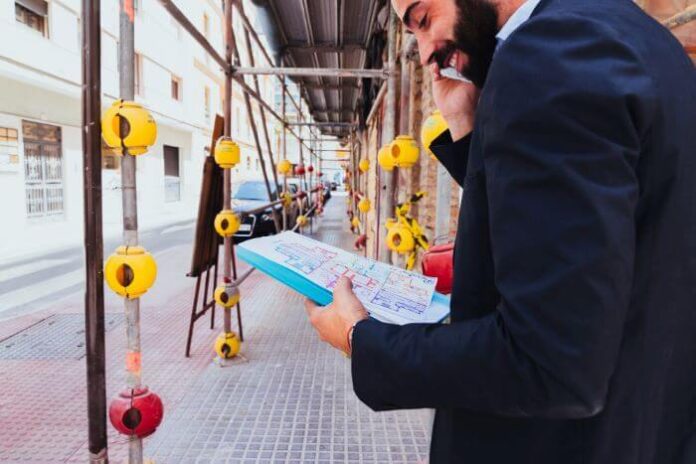Construction has long been regarded as one of the most hazardous industries. However, with the advancement in technology and a better understanding of health and safety, this perception is changing.
The commercial construction industry is at the forefront of this transformation, with new standards and practices that prioritise safety over productivity. If you have also been thinking lately about safety in commercial construction, then you should read this post to the end.
It will show you how some safety standards in the industry have evolved and their impact on the future of commercial construction.
The Importance of Safety in Commercial Construction
Before delving into the specifics of safety standards, it’s crucial to understand why they are essential for commercial construction companies in the first place. The industry is inherently risky, with workers often dealing with heavy machinery, working at heights, or operating in potentially hazardous environments. Even a slight lapse in safety precautions can result in serious injuries or even fatalities.
Moreover, accidents and injuries on construction sites not only impact the wellbeing of workers but also affect project timelines and finances. Delays due to accidents can lead to extended project durations, increased costs, and potential legal implications.
Evolution of Safety Standards: From Reactive to Proactive
Historically, safety standards in the construction industry were largely reactive, focusing on mitigating the impact of accidents after they occurred. However, over the years, the approach to safety has evolved to become more proactive.
This shift means focusing on preventing accidents from happening in the first place rather than merely responding to them. Prevention strategies are wide-ranging. They could include risk assessments, safety training, regular safety audits, and promoting a culture of safety where everyone on site is responsible for maintaining safe practices.
The adoption of this proactive approach has significantly reduced the number of accidents and injuries in the commercial construction industry.
Technology and Safety
In recent years, technology has become a critical tool in enhancing safety in commercial construction. From wearable tech that monitors workers’ health in real-time to drones that conduct safety inspections in hazardous areas, technology is helping to make construction sites safer.
One emerging technology is Building Information Modelling (BIM), which allows construction teams to simulate safety scenarios and identify potential hazards before they become a problem. By incorporating safety considerations into the design and planning stages, risks can be minimised, and preventive measures put in place.
Virtual reality (VR) is another technology being used for safety training. VR can simulate real-life construction environments and scenarios, allowing workers to practice responding to safety hazards in a safe environment.
This hands-on approach to safety training can help to prepare workers for the realities of the job, reducing the likelihood of accidents on site.
Embracing a Culture of Safety
One of the most significant shifts in the commercial construction industry is the recognition that safety is not just about rules and regulations, but about culture. Safety culture refers to the shared beliefs, practices, and attitudes towards safety within an organisation.
In a robust safety culture, everyone from senior management to on-site workers takes responsibility for safety. Safety is seen not as a separate concern but as an integral part of all work practices.
If you are looking to build a safety culture in your commercial construction sites, you will need to consider providing regular safety training, encouraging open communication about safety concerns, and demonstrating a top-down commitment to safety.
When safety becomes a core value, it can lead to safer work practices, fewer accidents, and a more engaged and motivated workforce.
Regulatory Changes and Compliance
In many regions, regulatory bodies have been instrumental in driving improvements in safety standards. These bodies set safety rules and regulations that construction companies must adhere to. They also conduct inspections and audits to ensure compliance and penalties for non-compliance can be severe.
Let’s take the UK as an example. There, the Health and Safety Executive (HSE) is the regulatory body responsible for enforcing safety in the construction industry. Over the years, the HSE has introduced a range of safety regulations and guidelines, which have been instrumental in improving safety standards in commercial construction.
These include the Construction (Design and Management) Regulations, which focus on managing health, safety, and welfare considerations from the design phase to the completion of a construction project. Compliance with such regulations is not only a legal requirement but also demonstrates a company’s commitment to maintaining a safe work environment.
What Are Some Future Trends in Safety Standards
As the commercial construction industry continues to evolve, so do safety standards. One emerging trend is a greater focus on mental health and wellbeing. Construction work can be stressful, with tight deadlines, long hours, and pressure to deliver.
Recognising the impact of these stressors on mental health, and implementing measures to support workers’ mental wellbeing, is becoming a key aspect of safety in the industry.
Another trend is the increasing use of data in safety management. Advanced data analytics can help identify trends and patterns in safety incidents, helping to predict and prevent future risks.
With the rise of the Internet of Things (IoT) and smart construction sites, the use of data in safety management is set to increase.
Final Note
We all know how safety in the commercial construction industry has come a long way. From an afterthought to a proactive approach and now a cultural shift, safety standards have undergone a significant transformation.
The emphasis on safety has resulted in not only a reduction in accidents and injuries but also increased productivity and employee satisfaction.
Technology will continue to play a crucial role in further enhancing safety, and with an increasing focus on mental health and data-driven safety management, the future of safety in commercial construction looks promising.







